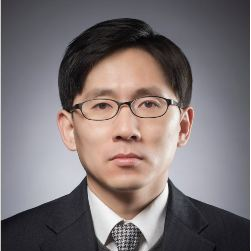Energy-Efficient Computing and Communication
A special issue of Energies (ISSN 1996-1073). This special issue belongs to the section "A1: Smart Grids and Microgrids".
Deadline for manuscript submissions: closed (28 February 2020) | Viewed by 24318
Special Issue Editor
Interests: 5G; IoT; vehicular networking; energy harvesting; simultaneous wireless information and power transfer (SWIPT); vehicle-to-grid (V2G); network softwarization
Special Issues, Collections and Topics in MDPI journals
Special Issue Information
Dear Colleagues,
It is well-known that information and communication technologies (ICT) contribute up to 10% of world power consumption. In particular, communications and computing systems are indispensable elements in ICT, and thus how to improve the energy efficiency in communications and computing systems becomes one of the most important issues to realize green ICT. Even though a number of studies have been conducted in the literature, most of them focus on one side—in either communications or computing systems. However, salient features in communications and computing systems should be jointly considered, and novel holistic approaches across communications and computing systems are strongly required to implement energy-efficient systems. In addition, emerging systems such as energy-harvesting IoT devices, cyber-physical systems (CPSs), autonomous vehicles (AVs), and unmanned aerial vehicles (UAVs) require new approaches to satisfy their strict energy consumption requirements in mission-critical situations.
The goal of this Special Issue is to disseminate the recent advances in energy-efficient communications and computing systems. Review and survey papers on these topics are also welcome.
Potential topics include, but are not limited to, the following:
- energy-efficient communications: from physical layer to application layer;
- energy-efficient computing systems;
- energy-efficient network architecture: through SDN/NFV/network slicing;
- energy-efficient system design;
- energy-efficient Internet of Things (IoT) and Industrial IoT (IIoT);
- energy-efficient edge/fog/cloud computing;
- new approaches for energy-efficient computing and communications (e.g., AI/ML and data-driven approaches);
- new performance metrics on energy efficiency in emerging systems;
- energy harvesting and simultaneous wireless information and power transfer (SWIPT);
- Smart Grid and Vehicle-to-Grid (V2G);
- standardization and open source activities for energy efficient systems.
Prof. Sangheon Pack
Guest Editor
Manuscript Submission Information
Manuscripts should be submitted online at www.mdpi.com by registering and logging in to this website. Once you are registered, click here to go to the submission form. Manuscripts can be submitted until the deadline. All submissions that pass pre-check are peer-reviewed. Accepted papers will be published continuously in the journal (as soon as accepted) and will be listed together on the special issue website. Research articles, review articles as well as short communications are invited. For planned papers, a title and short abstract (about 250 words) can be sent to the Editorial Office for assessment.
Submitted manuscripts should not have been published previously, nor be under consideration for publication elsewhere (except conference proceedings papers). All manuscripts are thoroughly refereed through a single-blind peer-review process. A guide for authors and other relevant information for submission of manuscripts is available on the Instructions for Authors page. Energies is an international peer-reviewed open access semimonthly journal published by MDPI.
Please visit the Instructions for Authors page before submitting a manuscript. The Article Processing Charge (APC) for publication in this open access journal is 2600 CHF (Swiss Francs). Submitted papers should be well formatted and use good English. Authors may use MDPI's English editing service prior to publication or during author revisions.
Keywords
- energy-efficient communications
- energy-efficient computing systems
- energy-efficient networking
- energy-harvesting techniques
- Internet of Things (IoT)
- edge and fog computing
Benefits of Publishing in a Special Issue
- Ease of navigation: Grouping papers by topic helps scholars navigate broad scope journals more efficiently.
- Greater discoverability: Special Issues support the reach and impact of scientific research. Articles in Special Issues are more discoverable and cited more frequently.
- Expansion of research network: Special Issues facilitate connections among authors, fostering scientific collaborations.
- External promotion: Articles in Special Issues are often promoted through the journal's social media, increasing their visibility.
- Reprint: MDPI Books provides the opportunity to republish successful Special Issues in book format, both online and in print.
Further information on MDPI's Special Issue policies can be found here.






